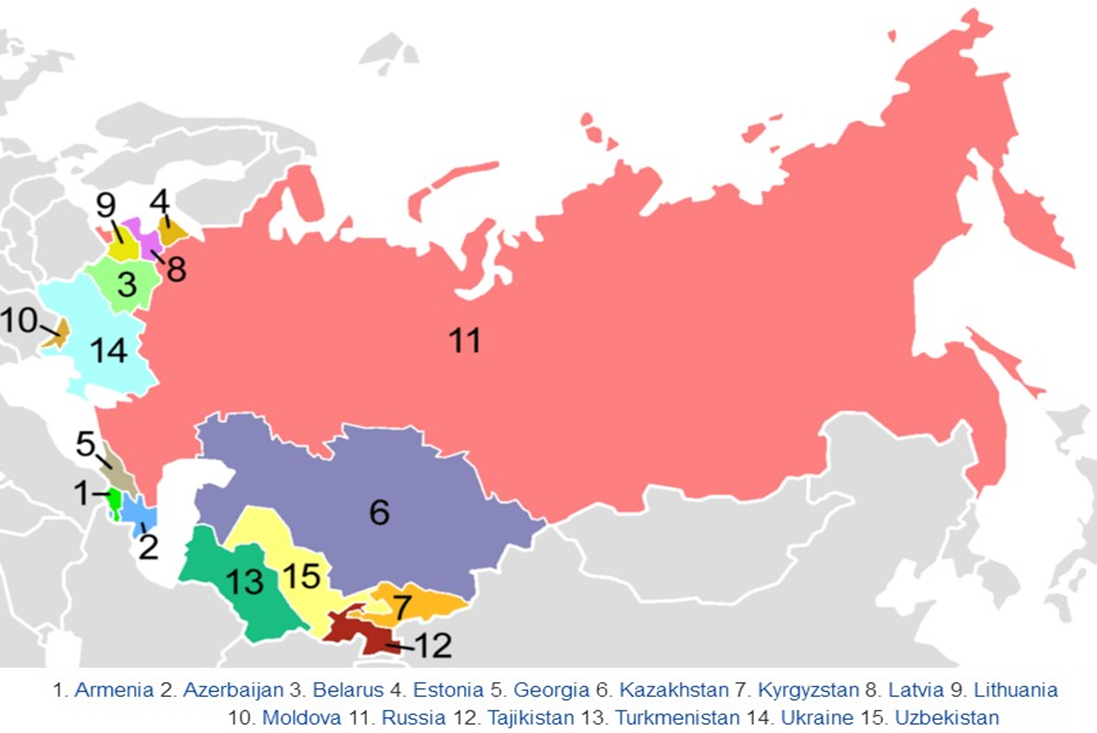05-01-2024 Mains Question Answer
Approach:
- Introduction: What was USSR, The Union of Soviet Socialist Republics
- Body: Mention the factors which led to disintegration of USSR. What were the aftereffects of disintegration
- Conclusion: Write a conclusion discussing the impact on disintegration and link it with the end of cold war
Ans: The Union of Soviet Socialist Republics (USSR) was a loose confederation of 15 republics with Russia as the leader. USSR was a strong bloc with great control over global politics from 1922 to 1991, when it was disintegrated into smaller units.

Factors which led to the disintegration of the USSR
1. Economic Weakness
The weakness of the economy was the major cause of dissatisfaction among the people in USSR. There was severe shortage of consumer items. The reason for economics weakness were the following.
- Huge military spending.
- Maintenance of satellite states in Easter Europe.
- Maintenance of the Central Asian Republics within the USSR.
- Political Un-accountability
The communist party regime (single party rule) for around 70 years turned authoritarian. There was widespread corruption, nepotism and lack of transparency. Gorbachev’s decision to allow elections with a multi-party system and create a presidency for the Soviet Union began a slow process of democratization that eventually destabilized Communist control and contributed to the collapse of the Soviet Union.
- Gorbachev’s reforms
Once people started to enjoy freedom under Micheal Gorbachev’s reforms, they demanded more. The demand grew into a big force which turned difficult to control. The people wanted to catch up with the west quickly.
- Rise of nationalism
The rise of nationalism among countries like Russia, Baltic republics (Estonia, Latvia, Lithuania), Ukraine, Georgia etc. is the most important and immediate cause of the disintegration of the USSR. The national feeling was strong among the more prosperous areas in the USSR and not in Central Asian republics. Ordinary people in prosperous republics didn’t like to pay a big price to uplift the backward Central Asian republics.
Aftereffects of the disintegration of the USSR
- The fall of the second world.
- The period marked the end of many communist regimes in response to mass protests.
- End of Cold War: End of arms race, end of ideological confrontations.
- Change in power equations: Unipolar world, capitalist ideology, IMF, World Bank, etc.
- Emergence of new countries and new alliances – e.g.: Baltic countries aligned with NATO.
The disintegration of the Soviet Union took place between 1988 and 1991. After then, the USSR’s political, economic, and ethnic fragmentation ended the Soviet Union’s existence as a sovereign state. Former General Secretary Mikhail Gorbachev aimed to overhaul the Soviet political and economic structures. After World War II, Germany was divided between the communist USSR and the capitalist West. The fall of the Berlin Wall started a series of events that led to the Disintegration of the Soviet Union. Economic weakness, political stubbornness, and the growth of nationalism were the causes for the disintegration of the Soviet Union or the disintegration of the USSR.

